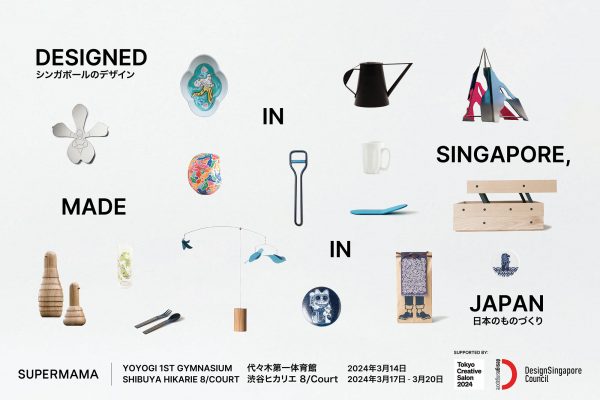Original designer furniture tends to be pricey for good reason, from the quality of materials used to the number of weeks, months and even years taken to research, design, develop and produce the pieces. For the fifth story in our series that aims to give you the 101 on original designer furniture, we talk to Yu Hua Liew, who shares how she started her journey to becoming a designer-maker and the challenges she’s faced in pursuing her passion of making furniture using traditional woodworking methods. Yu Hua was a participant in the first run of the Dsg-supported Ampersand Pre-accelerator programme in 2019.
By Low Shi Ping

Yu Hua Liew
Founder, Secret Life of Trees
IG: @secretlifeoftrees_
In 2016, a series of events compelled Yu Hua Liew to walk away from a comfortable corporate job to search for a purpose where her hands, heart and mind could align. Three years later, she founded Secret Life of Trees, where she designs and crafts custom-made furniture of heirloom quality. She also takes in old furniture and repurposes them into contemporary pieces to fit our 21st century spaces.
Where did you go to study your craft and eventually set up Secret Life of Trees?
While I wanted to make personalised solid wood furniture through traditional methods that have remained almost unchanged over hundreds of years in woodworking – such as steam-bending, marquetry, sliding dovetails and turning on the lathe – there was no one in Singapore from whom I could learn these skills at the level that I wanted.
In 2016, I attended a nine-month vocational course in woodworking in Scotland at the Chippendale International School of Furniture. There, I picked up the basics of woodworking and learnt to design and construct solid wood furniture.
When I came back, it was hard to find employment and I ended up freelancing, teaching and selling a few customised pieces. I was mostly focused on developing a better portfolio. Eventually, an incredible mentor and friend Tim Hankinson introduced me to a designer-craftsman, John Thompson, who trained as a temple carpenter in Japan for seven years, before setting up a successful landscape design business back in Canada. He took me under his wing as an apprentice.
I lived with John and his wife for six months on Vancouver Island where I developed a sense of form, learnt how to draft, was encouraged to read all sorts of design, art and architecture books from his massive library, and ultimately developed a deeper appreciation for the material and technical ability to make my own pieces. When I returned to Singapore in 2019, I established Secret Life of Trees.

How do you select the wood to make your pieces?
Factors to consider include where and how the tree was grown, if its environment had caused shakes and knots in the wood (which affects how it should be cut and processed), how it was felled and dried. There is also the function of the piece to think about.
For example, people usually pick up a chair by its back rail, drape themselves over it and rock back and forth on the back legs. All these means it is important for the joinery to be incredibly strong. The wood grains must run in the right direction for the design to work and for the chair to maintain its strength and not fall apart even after years of abuse.
Where do you get your inspiration from?
The wood I work with, people whose stories inspire me and the forms found in nature.
Every tree grows a certain way because of its environment. It therefore needs its own special way of milling and drying to coax it into a useable material. The figure in the wood grain informs my design of the piece – by examining elements such as the way the grain runs, and the growth of the wood rings and knots, I can roughly make out the story of the tree.

The concept of freedom in design, without the many restrictions I see in mass-produced furniture, is central to my work
The human condition also fascinates me and guides my work when thinking about the way we respond to wood as a material, and how we interact with our built environment. I love hearing stories from people of all ages and all walks of life, especially from elderly craftsman who’d tell me stories of their adventures in the 1960s or 1970s, and some of the foreign workers I have had the pleasure of working with.
Lastly, the forms found in nature serve as an endless well of inspiration. There are no straight lines found in the flow of water, the growth of trees and the movement of air currents. Every form represents the ultimate freedom. The concept of freedom in design, without the many restrictions I see in mass-produced furniture, is central to my work.

How much time, on average, does it take for you to create a piece of furniture?
I need a minimum of three weeks to design and make a piece from scratch. If it’s reproducing a small piece like a coffee table or stool/side table that I have previously designed, it would take about a week.
What do your hands offer to a piece of furniture that a machine cannot?
I can shape the piece and make adjustments to its form as I go along. If something looks like it could be made better, I can do it on the spot. No two pieces are the same – there are little textures and details that hand tools and finishes leave behind that make the piece more inviting to the touch and more soothing to the eye.
For example, I might choose to saw a curve or taper into a piece using a bandsaw to add a more elegant look to the design, or carve a small detail as a surprise for the client. I could chisel out sliding dovetails to lock a piece in place so that the furniture pieces can be put together without glue. Machines and manufacturing processes have no sensitivity to form and materials, and usually result in great wastage.

You recently took part in a Dsg-supported Ampersand Pre-accelerator programme. Can you share how helpful it was to you as an entrepreneur?
The programme gave me the opportunity to step back and further refine my business plan. Being a designer-craftsperson, I am always striving to sharpen my design skills and hone my craft, often neglecting to work on business strategy. It helped me understand how building a business is vastly different from simply offering a product or service, no matter how well the latter sells.
The best part was being able to speak with mentors and peers from all sorts of different industries, unrelated to my own. Even now, I am able to tap on the expertise of the community of people I met through it as I continue to grow my business. Too often, as designers/people in the creative industry, we seek advice from those with more experience in the same field, but it is equally important for us to hear advice/opinions from people in other industries.












